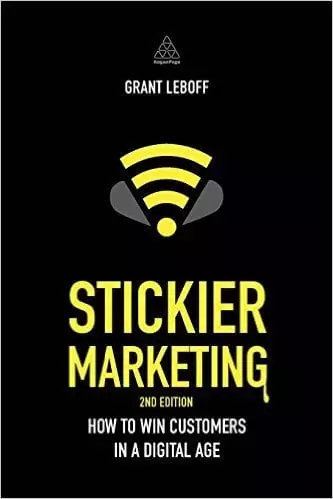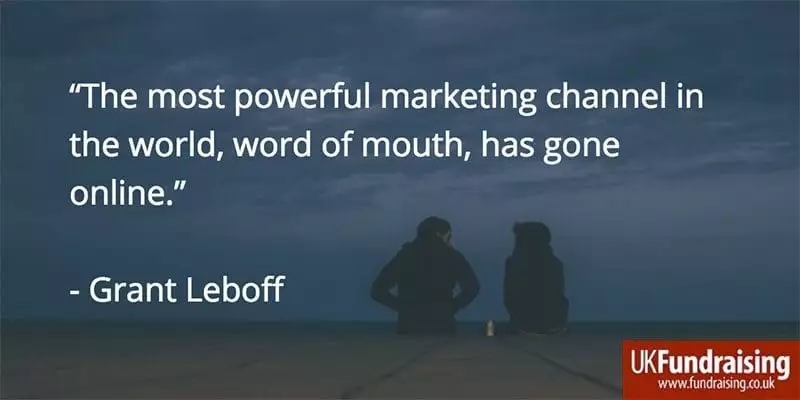Understanding the crisis facing charity fundraising
There is a recognition that charity fundraising needs to change. With the plethora of adverse publicity received by the charity sector, there is an acknowledgement that some of the tactics used by charities in the past will no longer be deemed acceptable by the general public.
For many within the charity sector this unwanted attention has come as a bit of a shock. After all, charities have been sending voracious amounts of direct mail, using telemarketing and employing street fundraisers for years. So why, suddenly, have these activities become unacceptable?
The bottom line is quite simple. Charities haven’t modernised. They have been employing the same techniques for years. The problem is that their donors have changed and the charities have been left behind.
There was a time when people relied on sales and marketing materials to find out about different aspects of life. For example, years ago, people would choose a holiday by visiting their local travel agent and picking up the brochures. Of course, those brochures were not put together by the British Government to enhance the well-being of the nation! Rather, they were marketing materials put together by commercial organisations looking to sell holidays. Yet, despite this, we actually made the effort to go and collect the brochures.
In this environment, although a lot of the interruptions that we received were irrelevant, most people were prepared to accept direct mails and cold calls because some of them did provide us, as consumers, with value.
Don’t interrupt me!
However, with the creation of the world wide web and digital technology, individuals have found themselves with 24/7 access to virtually all the information and choice they are ever likely to require. In this scenario, people have become much less tolerant of the interruptions via the mailbox, telephone, email or on the street. Safe in the knowledge that when they need a product or service they will be able to access it, consumers no longer want to be interrupted as these interferences now provide little value.
Moreover, with text messaging and messaging apps, emails, social media platforms and phone calls etc., we are all having to deal with more information than ever before. The only way we cope is by personalising the material. This is something which digital enables. So, for example, music streaming services allow us to only select the tracks we want to hear.
Gone are the days of sitting through songs we do not enjoy. We can download newspapers and only select the sections which peak our interest. Catch-up TV services, such as BBC iPlayer, means that we no longer have to sit through evenings flicking between programmes we do not want to watch.
This personalisation has meant that some of the serendipity of life has disappeared.
Disparity between donor and charity
However, it is necessary in a world of information overload. It also means that we are less tolerant of those organisations that cut through this personal environment with irrelevant mailers, spam emails, texts and irritating phone calls. In a world where customers have been empowered, these techniques no longer provide the value that they once did. In short, customers do not want to receive them. The problem is that charities are still predominantly using these methods to raise funds. As the disparity between donor and charity widens, this situation is exacerbated.
Meanwhile, charities, like so many commercial organisations, have missed the point. Marketing used to be the art of interrupting someone else’s audience. So, a magazine or newspaper may have a following with the value it creates. A charity might then place an advert to interrupt that audience with a call to action. Similarly, a high street may attract a lot of footfall with the offering it has. Street fundraisers would then interrupt those visitors as they were going about their business.
The digital revolution has changed this paradigm. For the first time in history, everyone has a channel. It is no longer just media companies with the mechanism to communicate directly with the public. Organisations and businesses via websites, blogs and social media platforms now possess channels where they can do the same.
Advertisement
Word of mouth has gone online
Meanwhile, individuals also now have their own individual channels. This has resulted in an increasing amount of information being accessed via social sharing, rather than official broadcasting and publishing. In other words, the most powerful marketing channel in the world, word of mouth, has gone online. The result is that the best marketers a business, organisation or charity has today is the community it builds around itself.
Building this community is a different discipline from transactionally interrupting potential donors with one off communications and hoping they will respond. It requires engaging them over a longer period. This can only happen if charities understand how to create value for donors, as well as asking them to give.
Moreover, the new channels which charities, like all organisations, need to exploit do not work in the same way as traditional marketing mediums. A charity’s website, blog and social media pages do not have a natural audience. There is no reason why someone would just go and visit. Therefore, these mechanisms work more like media channels.
Create a community around your cause
Today, marketing is about earning and retaining an audience rather than interrupting one, which is something people clearly don’t want in any case.
The opportunity is that in taking this approach, charities create a community around their cause. The real power of digital is then unleashed as this community becomes the best marketers the charity has. This model is more sustainable than transactional marketing. It also relies on attracting donors to the charity rather then interrupting them. Thus, in this way, it rids charities of all the current challenges they have around fundraising. It is this fundamental change in marketing to which charities have to face up and address. It is exactly the same challenge with which commercial organisations are having to deal.
In many ways, the only real crime charities have committed is in not recognising how donors are changing and then reflecting this in their own practices. On the one hand, when put like that, charities don’t deserve the bad press they have received. On the other hand, not responding to the requirements of your different stakeholders is the ultimate transgression. Knowing what your audience demands is the minimum requirement to survive and stay relevant in any sphere of life. This is the challenge charities face today.

Photo: woman at self-service bank ATM by Capricorn Studios on Shutterstock.com




